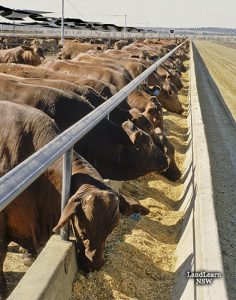- Introduction and Nutrition 101
- Antioxidants
- Organic vs. Conventional Foods
- Nutrient Profiling Systems
- Nutrient Decline
- Other Choices and Challenges

Introduction and Nutrition 101
How can a person tell if a serving of one food is more nutritious than a serving of a different food? What about the overall nutritional quality of food choices made during any given day – how does a person know if all their nutritional needs have been met?
There are many reasons why consumers, farmers, and the food industry need information about the nutritional quality of food. Two examples —
- A doctor informs a patient that he/she is on a path to Type 2 diabetes and that lifestyle and dietary changes are needed to avoid the disease. How can the person identify dietary components contributing to the progression of the disease that need to be avoided, as well as foods that should be added to daily diets to promote a return to normal blood sugar management?
- A food company is looking for ways to increase the nutritional quality of their manufactured foods. How can they sort through the multiple impacts on nutritional quality from changes in recipes and cooking methods?
The best way to answer such questions is to seek insights from applications of a “Nutrient Profiling System” (NPS). Such systems quantify the “nutritional contribution”, and hence “nutritional quality,” of different foods.
By “nutritional contribution,” we mean the portion of a person’s daily nutrient needs that are satisfied by a serving, or a known quantity, of a given food.

By “nutritional quality,” we mean the capacity of the nutrients in a given food to promote human health by assuring that: (a) basic physiological and metabolic needs are met, and (b) nutrient deficiencies do not trigger or accelerate the progression of disease, or the aging process.
There are over two-dozen essential nutrients that people must get via food, or suffer dire consequences. Scientists have established Recommended Daily Allowances (RDAs), or comparable intake levels, for all or most of these nutrients. These levels play an integral role in nutrient profiling systems.
Such systems calculate the percent of a person’s daily need for essential nutrients that are supplied by a known quantity of a given food. The score for a serving, or 100 grams of any given food,
is the sum of the percentage of each RDA provided by the food, across all nutrients within the nutrient-profiling system. The higher the score, the more nutritious a given food is.
Related Keywords:
View additional related content
Good Fat, Bad Fat


For decades doctors and dieticians have urged people to reduce fat intake to lower the risk of cardiovascular disease and a host of other health problems. Little attention was focused on fat quality. But in the last five years, the scientific consensus on fat has dramatically changed.
Government recommendations and policy brought transfats into the American diet 40 years ago, but now the FDA is forcing the food industry to quickly phase them out.
Once viewed as universally bad, saturated fat is enjoying a strong comeback as a result of science that shows that some important saturated fats are indeed heart-healthy.
Fatty Acids
While both major types of polyunsaturated fatty acids (PUFAs) – omega-6 and omega-3 – are essential nutrients, research has now shown that their health-promoting benefits depend on balanced intakes of each. But the current American diet contains about 15-times more omega-6 compared to omega-3, and some of the major omega-6s in food actually promote inflammation and heart disease.
Plus, high intakes of omega-6 relative to omega-3 reduce the body’s ability to convert the major omega-3 in food, alpha-linolenic acid (ALA), to the very important long-chain PUFAs DPA, EPA, and DHA (for more information, see this Primer on Fatty Acids Milk). These three long-chain PUFAs are present in food at low concentrations, but are vital for proper development of a child’s nervous system and eyes, to sustain brain health, and for strong immune systems.
Leading medical associations and the government have now acknowledged that the quality of fat in a person’s diet matters as much as the overall quantity of fat.
Unfortunately, over the last one-half century, there has been an explosion in consumption of deep-fried foods including French fries and fish and chips. And until recently, most foods have been deep-fried in corn or soybean oil, two oils that contain high levels of omega-6 fatty acids, compared to their level of omega-3s.
Key Resource: Primer on the Fatty Acids in Milk
Related Keywords:
- Fat
View additional related content
Impacts of Livestock Feeding Regimes

Another important factor impacting the good vs. bad fat debate is the way livestock are raised and fed. Both have changed dramatically, with major implications for omega 6 and omega-3 intakes. Across all areas of livestock agriculture, the importance of grass- and forage-based feeds has fallen precipitously, and corn, soybean, and other grain-based concentrates now account for most of the feed energy in animal rations.
This shift in what animals are fed has had profound impacts on human health, because corn and other grains are the building blocks of the primary omega-6 fatty acid, linoleic acid (LA), while pasture, grass, and legume-based forage feeds are the building blocks of ALA, the major omega-3 in food. Meat, milk and eggs from animals on grain-based rations have omega-6 to omega-3 ratios in the 5:1 to 12:1 range, while animals on grass- and legume-based diets produce food with ratios at or below 3:1.
Reducing dietary omega-6 to omega-3 intakes from around 15:1 (common today) to or below 2:1 will require a series of important changes in how animals are raised, the selection and use of cooking oils, and dietary choices. But significant progress is indeed possible, and is driving:
- Rising consumer demand for grass-fed beef and milk, and pasture-raised pork and poultry;
- The shift away from corn and soybean oil, and toward canola, olive, and other oils that lower the omega-6 to omega-3 ratio;
- Efforts by the biotechnology industry to create varieties of oilseed crops, especially canola, with altered fatty acid profiles that lower the omega-6:omega-3 ratio; and
- Innovation in the aquaculture industry to increase the supply and affordability of long-chain PUFAs from farm-raised fish.
